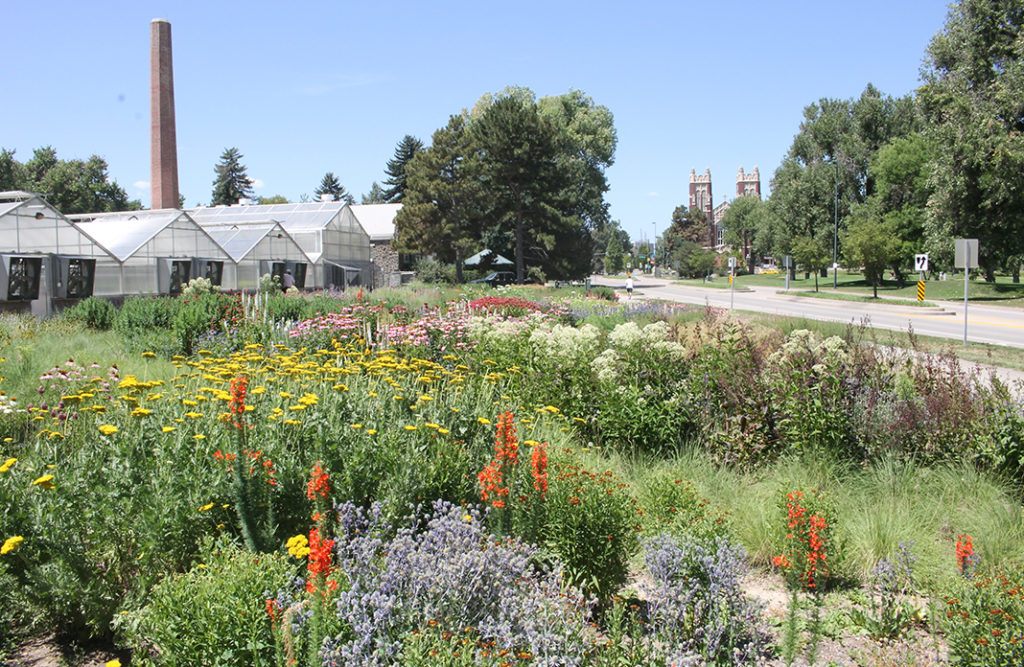How long has the city’s greenhouse been around?
Denver’s first greenhouse was built in 1894, within City Park at 19th Avenue and York Street. It was used mostly as a showcase for palms and grew plants that went out to other city entities as well as parks. In 1941, the palm hot house was moved to the zoo where it is used for their aviary display. New greenhouses were built on our current City Park location, and we began to grow other plants like mums to provide for the city’s hospitals and fire stations. By the 1950s and ‘60s, the greenhouse had begun to grow more plants for the city’s parks.
What is the scope of your production now?
We have 36,000 square feet of greenhouse space where we produce plants primarily for the city’s parks. We grow about 240,000 plants, most of which are annuals. The annuals go to 253 park flower beds as well as the Denver Botanic Gardens and the zoo. We also grow perennials, shrubs and poinsettias. Tropical plants for the Denver Zoo are grown in two houses by zoo staff. Ninety-five percent of our production is done from seed and our plant mix is determined by about 40 different users, who specify their needs in March of the year prior to receiving the plants. Our staff consists of four full-time employees and two seasonals, and we also depend heavily on Master Gardener volunteers who do much of our transplanting.
 What factors influence your plants once planted?
What factors influence your plants once planted?
Our goal each year is to have all of our plants in the ground by June 1. Unfortunately, the ground temperature at that time of year can be considerably colder than what the plants experience in the greenhouse. So there can be some planting shock as a result. Vandalism and theft sometimes affect the appearance of our beds. The water factor is a tough one, too, since many of our irrigation systems are designed and zoned for turf, which doesn’t help our annuals and perennials that require a different watering regime.
What are some of your challenges?
Probably the biggest challenge is providing good substitutions and options for so many different types of plants that people request but we simply can’t offer. Since we grow mostly from seed, that eliminates many patented plants that are grown from cuttings or require ordering from a vendor. We’re working to steadily increase our perennial production as these plants play an important role in our water use and labor cost reductions, since they don’t have to be replanted every year.
 What’s the best part of your job?
What’s the best part of your job?
I get a lot of satisfaction when I see the plants we’ve grown in the greenhouse being used as colorful backdrops for park events, especially weddings. We often get very positive feedback.
What value do you get from CNGA?
CNGA provides valuable networking that helps us stay on top of new plants, procedures and technology. It’s a go-to resource for us when we need to find experts for our questions. Through the networking and other opportunities like this member profile, CNGA helps get our name out there so the public and industry can better know our role in creating a great park experience for our citizens.
 Denver Parks & Recreation
Denver Parks & Recreation
720.865.0792
julie.lehman@denvergov.org










